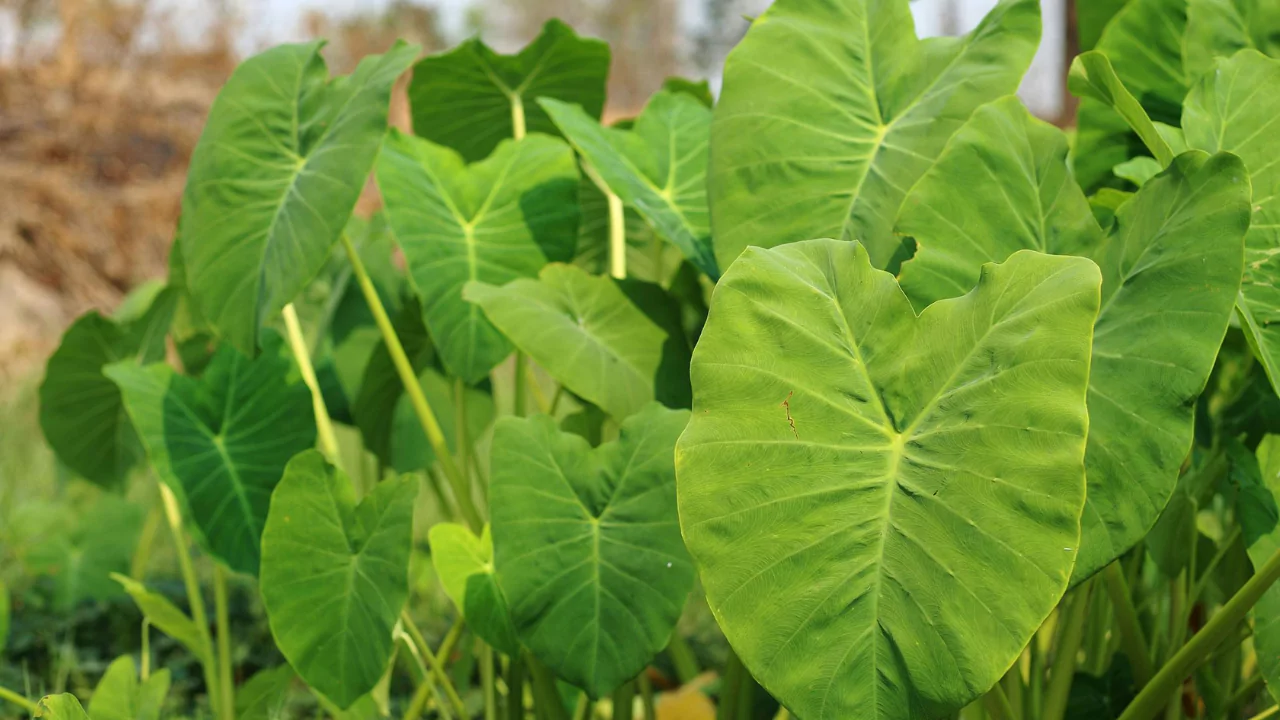
Here’s a riddle for you: what plant is poisonous in nature but serves as a significant food staple across different regions of Asia? The answer is colocasia or taro, with the arrow-shaped leaves known as elephant ear.
Taro is consumed in many parts of the world, being a significant source of nutrition for humans as well as livestock, rich in protein. It is served traditionally at Hawaiian luaus and the corms are a main ingredient of poi, a cherished Hawaiian dish.
However, elephant ears do contain calcium oxalate crystals (or oxalic acid) which also taint rhubarb and the Dieffenbachia leaves. These chemicals contain sharp crystals that if ingested in large quantities can pose serious health risks including death.
So how does it all work? What allows plants to be poisonous but still provide nourishment to people across the world? In most cases, it’s always eaten after being cooked – not raw. Cooking breaks down the crystals that form during cooking which make them harmless.
Some varieties may indeed be more toxic, however the elements used as food sources are usually not from those found in your garden.
You can learn how to grow elephant ear plants and discover when you should plant elephant ear bulbs.
Elephant Ear Plant Safety
While elephant ears are not as harmful as Dieffenbachia, it is best to exercise caution around them, particularly if you have young children or pets. The leaves and stems are the most toxic parts of the plants.
Even minimal interactions with them can result in skin irritation and blisters. Touching the sap poses additional risks; should it come into contact with your eyes, they will sting and burn for several hours.
The initial signs of ingestion by a child or animal include the sensation of tingling and burning in the lips and mouth as well as irritation in those areas. Ingesting large quantities is uncommon, but there are other symptoms along with elephant ear poisoning which can be harmful:
- Severe burning or redness of the eyes
- Severe burning of the tongue, lips and mouth and oral irritation
- Swelling of the tongue, throat, lips and eyes
- Difficulty swallowing or excessive drooling
- Diarrhea
- Nausea
- Vomiting
First Aid
You might want to take your child to the poison control center immediately after suspecting that they have ingested elephant ears leaves. You may call 1-800-222-1222 for national hotline and do not panic if you find them vomiting just make sure they stay calm and remove any forced vomit from their cooled mouth.
If your child’s eyes are stinging while actively engaging in swiping movement then feel free to flush water. There’s a possibility that if their lips or mouth suddenly become puffy then ringing 9-1-1 or going straight into an emergency room can help you out. Reach out to your vet if you think your pets have eaten some Elephant ears right away.
Prevention
In case you love elephant ear plants, and you have young kids or pets, there are a few tips you can use to make sure there isn’t any accidental poisoning. First, try to ensure the plants are kept out of reach. You can grow them in the front yard instead of the backyard where kids and pets usually play.
You can also educate your children not to touch or eat any plant located within the yard. Another possibility is growing smaller varieties of elephant plants in hanging pots but ensure that any fallen leaves are removed immediately!
Other Options
Sometimes it is best to assume the worst scenario might happen. In case you are concerned with safety of your child or pet, consider having non toxic variety instead.
There are plenty tropical looking plants that would be safe for your children and pets. A couple would include:
- Acajou (Flame African Violet, Flame Violet, Red Violet)
- American Rubber Plant
- Arrowroot (Canna Lily, Common Garden Canna)
- Bamboo Palm
- Bamboo Vine
- Banana (Plantain)
- Big Leaf Paper Plant
- Boston Fern
- Bromeliad
- Canary Date Palm
- Cane Palm
- Christmas Dagger
- Cocks Comb
- Crisped Feather Fern
- Dwarf Date Palm
- Elephant Foot Tree
- Fishpole Bamboo
- Fortunes Palm